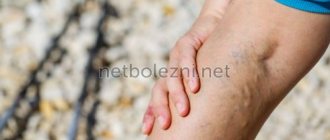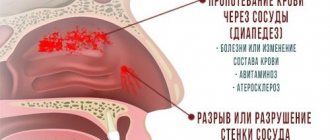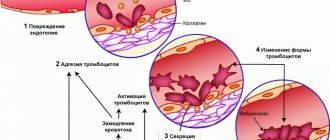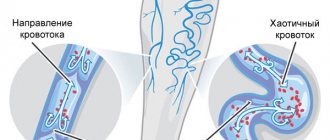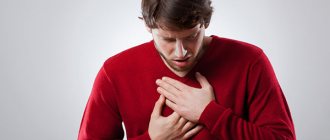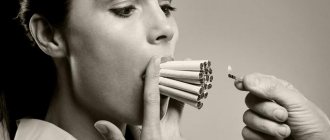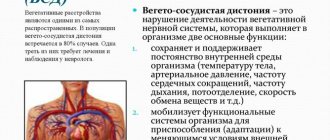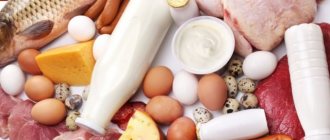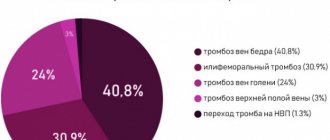Diseases of the arteries and veins are found everywhere in the practice of specialists. According to statistics, almost every second person suffers. And this is only official data on those who contacted specialists.
Vascular pathologies are heterogeneous in nature. But they have something in common. This is a tendency towards rapid destruction of arterial/venous walls, their relaxation, decreased elasticity, and increased internal resistance.
As a result, there is not only an increase in the risk of destruction of such an abnormally changed vessel, but also a weakening of blood flow. An increase in pressure in the system is an unpleasant addition.
Without healthy blood vessels, there can be neither normal brain function nor the functioning of other internal organs. Therefore, it is necessary to maintain the blood supply structures in normal condition. It is advisable not to allow pathologies to develop. If trouble has already happened, treatment is indicated.
Vessels can be strengthened using medicinal methods; lifestyle adjustments are also of great importance. Pills alone won't help matters.
There are many specialists who provide assistance: from phlebologists (correction of vein pathologies) to angiosurgeons, and others.
When is it necessary to strengthen blood vessels and capillaries?
Blockage of blood vessels, decreased tone and elasticity of the walls, as well as fragility of the veins in humans develop gradually. For a long time, the patient may not even be aware of any pathological disorders in his circulatory system. Signals to strengthen blood vessels and capillaries will be as follows:
- A sudden rise from bed is accompanied by the appearance of dark spots and goosebumps before the eyes.
- The appearance of frequent dizziness for no apparent reason, sometimes accompanied by loss of consciousness.
- Increased weather sensitivity and poor reaction to too hot weather.
- The occurrence of aching pain in the joints, a feeling of cold in the fingers, lower and upper extremities.
- Constant jumps in pressure, which are also accompanied by tachycardia.
- Feeling tired and easily tired.
You should not expect complications of some pathological condition occurring in the circulatory system. It is necessary to begin strengthening blood vessels and capillaries as early as possible.
Symptoms of vascular problems:
Doctors include signs of a violation of the integrity of blood vessels and problems with blood circulation:
- change in skin color (“marbling”, cyanosis, redness or pallor);
- swelling;
- cramps at night and after exercise;
- loss of sensation in the limb;
- spider veins (abnormal expansion of blood vessels located close to the surface of the skin);
- soreness in a body area;
- bruises, hematomas for no reason (in the absence of blows or other physical impact).
The most effective means
If you have unpleasant symptoms that have not been observed before, this should alert you. In any case, you should consult a doctor. Currently, there are many effective drugs for strengthening blood vessels and capillaries. However, you should not use them yourself. The specific medicine and its dosage must be prescribed by a doctor. As a rule, when suspicious symptoms appear, experts recommend strengthening the blood vessels of the heart and brain, capillaries on the face, eyes and nose, and leg veins. By strengthening blood vessels throughout the human body, it is possible to restore the tone of already weakened walls, as well as restore their elasticity, while normalizing blood circulation.
Therapy of veins and capillaries is a very long and painstaking process, which may include several methods:
- Taking vitamin complexes.
- Drug therapy.
- Gymnastics for blood vessels.
- Traditional methods.
- Nutrition adjustments.
It’s worth noting right away that if you use only drugs to strengthen blood vessels and capillaries, there will be no visible result. Therapy must be comprehensive.
Symptoms that indicate a weakened vascular system
Negative symptoms that should force a person to pay close attention to the health of their blood vessels are as follows:
- insomnia;
- cephalgia, migraine;
- chronic fatigue syndrome;
- reaction to weather changes;
- dyspnea with minimal exertion;
- arthralgia, myalgia, heaviness in the legs;
- cold extremities.
If you have at least one of the listed symptoms, it’s time to consult a doctor and start improving your body’s health.
Vascular strengthening agents
To increase the elasticity of vascular walls, reduce their permeability, as well as fragility, you can use venotonics for external and systemic use. Let's consider the most effective drugs for strengthening human blood vessels and capillaries:
- "Fraxiparin", "Nadroparin", "Heparin". These medications thin the blood, saturate the brain and heart with oxygen, and eliminate congestion. Most often, these means for strengthening blood vessels and capillaries are used for heart diseases, as well as for circulatory disorders. The drugs are used in the form of injections. "Fraxiparin" cannot be used if blood clotting is poor. "Nadroparin" is contraindicated in case of individual intolerance to the components. Heparin is prohibited for ulcerative processes in the digestive tract.
- "Ascorutin", "Diosmin". These medications for strengthening blood vessels and capillaries are presented in the form of tablets. Medications reduce the fragility of blood vessels and capillaries. In particular, these drugs are intended to strengthen blood vessels and capillaries on the face. In addition, the tablets reduce the level of distensibility of veins and increase the tone of vascular walls throughout the body. These tablets are very effective for vegetative-vascular dystonia, atherosclerosis, hypertension, hypotension. "Ascorutin" is contraindicated for children under 3 years of age. Diosmin should not be taken by children under 18 years of age, as well as by women during lactation.
- "Venorutinol", "Lioton", "Troxevasin". To strengthen the walls of blood vessels and capillaries, experts also recommend using external agents in the form of ointments, creams and gels. These drugs restore blood circulation in the superficial layers of the skin and mucous membranes, strengthen the walls of even the deepest blood vessels, eliminate swelling, saturate the veins and capillaries with oxygen, and speed up recovery time. In addition, these drugs help maintain thin blood vessels in case of hemorrhoids and varicose veins. "Lioton" and "Venorutil" are not used if you are hypersensitive to the components that make up the ointment. "Troxevasin" is contraindicated in injured open areas of the skin.
List of the best herbs for blood vessels
Medical experts highlight several herbs and herbal preparations that most actively reduce cholesterol and help strengthen the circulatory system.
Immortelle
The roots, flowers and leaves of the plant contain a lot of magnesium and potassium, which help normalize the salt balance. Due to this, the level of sodium and its derivative components in the body decreases. Immortelle is a source of tannins and flavonoids, which help stabilize blood pressure.
This medicinal plant provides an invaluable service to the liver, accelerating the breakdown of complex carbohydrate compounds; this is an important fact for the recovery of the entire cardiovascular system. Doctors recommend taking immortelle for ailments such as hypertension and aneurysms. A decoction is made from the plant: 2 teaspoons of the herb are poured into half a liter of boiling water, left for 3 hours, filtered and taken three sips three times a day. The product turns out bitter, so it can be diluted with water. The course of treatment is one and a half months.
Attention! For patients with chronic liver diseases, immortelle decoction is contraindicated.
Peppermint
Peppermint is known to be an effective sedative. However, mint contains substances that stimulate the regeneration of vascular walls. Doctors prescribe enemas with the addition of mint essential oil for hemorrhoids. With the help of healing herbal procedures, broken blood vessel walls are healed, inflammation and painful symptoms are relieved.
Peppermint is a remedy against hypertension and vasculitis. Healing tea is prepared from the leaves of the plant. For 200 ml of boiling water, take a small spoon of the dry mixture, brew it and add honey to the tea. It is recommended to drink no more than two cups per day; there are no course restrictions.
Clover flowers
The plant contains many vitamins B, E, and K that are beneficial for human health. Clover contains more of them than green onions. Clover cleanses blood vessels from “bad cholesterol” and other lipid compounds. It is recommended to drink it for patients with atherosclerosis and heart failure.
Prepare an infusion of clover as follows: mix a tablespoon of dried clover flowers with three tablespoons of honey. Leave the mixture for two weeks, stirring daily. Eat a small spoon before meals three times a day, for up to one and a half months. During this period, you need to consume at least two liter jars of the mixture.
Dandelion root
This is an excellent remedy for breaking down cholesterol plaques and strengthening veins and capillaries. Medicinal decoctions and infusions are prepared from dandelion root, which help fight atherosclerosis, varicose veins, hemorrhoids and other ailments associated with pathologies in the venous vessels.
Preparing the infusion does not take much time; you need to take one part of the dry root and add five parts of hot water. You can use a thermos for this. Infuse the decoction and take 50 g three times a day; after taking, do not drink tea or coffee for about 2 hours.
Dill seeds
We can safely call this remedy universal, since it successfully treats many chronic diseases associated with the cardiovascular system. With the help of dill seeds, you can normalize blood pressure, reduce the risk of varicose veins, and expand the lumen in blood vessels. The infusion is prepared from 1 spoon of dill seeds and 1 liter of boiling water. After the medicine is infused, it is drunk for 14 days three times, 50 ml each.
Note! Dill seeds have a strong diuretic effect.
Hawthorn
Hawthorn contains a lot of phenolic acids, pectins, vitamin K, and ascorbic acid. These substances have a positive effect on the functioning of the cardiovascular system, normalize blood circulation, and increase the tone of the vascular walls. Doctors prescribe hawthorn to patients with heart rhythm disturbances accompanied by hypo- or hypertension.
Hawthorn is used to prepare medicinal alcohol infusion. First, dry the fruits of the plant well, then grind them in a coffee grinder. Then take 30 g of the powder mass and fill it with alcohol or high-quality vodka in an amount of 200 ml. Infuse the alcoholic infusion for at least 10 days, and take it in small doses, a spoonful three times a day. Treatment is continued for 21 days, then they take a break and start drinking the tincture again.
Melissa
This plant is a prophylactic for a variety of pathologies of the central nervous system and damage to brain tissue. Melissa serves as an “ambulance” for severe headaches or sudden spasms of blood vessels. Tea is made from it. You can brew the plant daily, but drink no more than three glasses. Melissa perfectly tones and gives vigor. It is recommended to add honey, lemon, and apple pieces to tea.
Fennel
The effect of fennel begins within 15 minutes, so it is recommended to use it for high blood pressure. Fennel has a powerful diaphoretic effect, it removes toxins from the blood and lymph and serves as a strong antibacterial agent.
Fennel infusion can be consumed 100 ml in the morning and evening 15 minutes before meals. The usual course is 14 days, then one week of rest and you can continue treatment. To prepare a medicinal infusion, you will need fennel seeds in the amount of a teaspoon and 200 ml of boiling water. Leave for 15-30 minutes and drink as directed.
Horseradish
The root of this plant, which contains a lot of calcium, iron, phosphorus, and potassium, is used for treatment. Horseradish helps balance the content of components such as red blood cells, platelets, and leukocytes in the blood; it removes sodium compounds and cleanses the blood. People with anemia, leukemia, and low hemoglobin levels are recommended to be treated with fresh horseradish root.
Grind the horseradish root on a fine grater and mix with a spoon of honey. Eat a small spoon daily.
Aloe
Aloe juice contains enzymes that can penetrate into the blood through the gastric mucosa. They break down lipid compounds and successfully remove cholesterol from the body. Aloe is useful for obesity, atherosclerosis, as well as complications of the heart and blood vessels.
It is recommended to use the plant juice fresh. To do this, a small leaf is cut from the bush, then the peel is removed from it and the resulting “candy” is placed under the tongue for half an hour. The procedure should be repeated daily in the morning and on an empty stomach.
Vitamin complexes
In combination with the drugs described above, the specialist can also prescribe vitamins to the patient to strengthen blood vessels and capillaries. Thanks to them, you can improve the general condition of the entire circulatory system and strengthen weak blood vessels. Doctors recommend taking the following effective vitamins:
- It will “direct” where vitamins B6, B1, B12 should be included. Vitamins are taken in the amount of one tablet once a day with meals. The duration of therapy is 1 month.
- "Duovit." You should take one tablet per day during meals. The duration of therapy is 1 month.
- Folic acid. This vitamin is consumed in the amount of one tablet twice a day. The duration of therapy is 1–1.5 months.
- "Vitrum Cardio". You need to take two tablets with each meal.
If the patient regularly uses vitamins to strengthen blood vessels and capillaries, this will prevent the accumulation of cholesterol plaques, strengthen fragile arteries, and also eliminate fragility of blood vessels.
What substances do our blood vessels need?
We can highlight the key substances that our blood vessels need:
- Rutin. Belongs to the group of vitamins P, helps strengthen capillary walls, and also indirectly lowers blood pressure, thereby reducing the likelihood of vascular ruptures.
- Vitamin C. Improves the permeability of smooth muscles, and it is this tissue that makes up the walls of blood vessels.
- Vitamin E. Refers to antioxidants, slows down the process of cell destruction. Long-term intake of vitamin E in therapeutic doses significantly reduces the fragility of blood vessels.
- B-group vitamins, K. Stimulate intercellular metabolism in the walls of blood vessels. Also useful for the heart muscle to prevent heart attack.
- Iron, potassium. Necessary for blood vessels to maintain natural elasticity. Indirectly, these elements are involved in the transport and absorption of oxygen.
It should also not be overlooked that the fragility of blood vessels is directly affected by the composition of the blood. That is why it is necessary to regularly cleanse the blood of “bad” cholesterol (because of it, atherosclerotic plaques are formed, disrupting the normal functioning of vascular valves), sodium compounds (including urea derivatives, because of which the elasticity of the walls of blood vessels deteriorates, they become more brittle).
Herbal tinctures
This home remedy is used to strengthen weak veins in the legs. To do this, you need to grind the lemongrass herb, ginseng root, and rhodiola, after which the ingredients are mixed in equal proportions. Then 60 g of the finished mixture is poured with one glass of alcohol or high-quality vodka. The composition should infuse for two weeks in a dark room. After this time, the composition is filtered, after which it is taken in the amount of 15–25 drops 3 times a day. The duration of treatment is at least a month.
Parsley
We continue to consider strengthening blood vessels and capillaries with folk remedies. Parsley is used to increase the tone of the capillaries that are located on the face. To do this, pour 2 handfuls of chopped greens into one glass of boiling water. The decoction should sit for half an hour. After this, it is filtered and mixed with one glass of warm milk. A soft cloth is soaked in the prepared liquid, wrung out and placed on the face. Such compresses must be done twice a day. The cloth should be left on the face for half an hour. The duration of treatment is 3 weeks.
Rose hip decoction
What other products exist to strengthen blood vessels and capillaries? Rosehip decoction is effective. Every morning you need to drink one glass of warm drink with the addition of one teaspoon of honey. It is also useful to make lotions that are applied around the eyes. To do this, brew 30 g of berries with one glass of boiling water, and cook everything in a water bath for 10 minutes. A cotton swab is moistened in the cooled broth and applied to the eyelids.
Yarrow juice
Above, we have already reviewed effective herbs for strengthening blood vessels and capillaries. However, yarrow juice is also considered very effective. It is used to strengthen the capillaries in the nose. To do this, several leaves of the plant are crushed and all the liquid is squeezed out of them. The resulting juice is dropped into the nose 2-3 times a day. In addition, it is necessary to consume fresh yarrow daily in the amount of one tablespoon. The duration of therapy is 1 month.
Young chestnuts
To strengthen the walls of blood vessels and capillaries throughout the body, you can use a tincture based on young chestnuts. Chestnuts in green shells are used for this. They need to be cleaned first. After this, you need to fill a 1 liter jar with chestnuts. Then pour vodka over these fruits. The product should steep for 2 weeks, after which it should be strained. The prepared composition is consumed on an empty stomach in the morning in the amount of one teaspoon, which is mixed with honey. The duration of treatment is 3 weeks.
Why do blood vessels weaken?
In order to get rid of the problem, you need to understand where it originates, so you need to consider in detail the reasons why the vessels lose their vitality:
Nervous tension. This is the most common cause of vascular disease today. Modern life itself is very exciting and difficult. A person faces troubles at work, stress, difficult relationships with others, the inability to lead a healthy lifestyle, and depression. Of course, the body malfunctions and this is expressed in the development of a certain disease.- Bad habits. Smoking and alcohol abuse also do not contribute to vascular health.
- Poor nutrition. Excessive consumption of fatty, salty and pickled foods leads to the formation of numerous plaques on the walls of human blood vessels. Doctors say that poor nutrition is to blame for everything; just a couple of decades ago the situation was not so bad.
Sedentary lifestyle. This phenomenon began to actively develop and worsen with the introduction of computers into modern life. Many people work while sitting at it, practically ceasing to move. Movement is very important for the health of blood vessels, as it accelerates the blood and helps blood vessels not become clogged. The vessels of the legs are especially affected by this.
Herbal collection
This collection of medicinal plants is used to increase the elasticity of blood vessels. To prepare the medicine, you need to grind Japanese sophora, barberry bark and branches, red clover leaves, and cudweed herb. Each ingredient is taken in an amount of 30 g. All herbs are mixed together, after which one tablespoon of this mixture is poured into 500 ml of boiling water, the composition is prepared in a water bath for 15 minutes. The finished strained decoction is consumed in an amount of 50 ml once a day. The use of this liquid should be more than one month.
Food
To keep the walls of your blood vessels elastic and strong, you must also limit the consumption of animal proteins, preservatives, nicotine and alcohol. In addition, it is recommended to include in your daily diet foods that can maintain the entire circulatory system in normal condition. These food products include the following:
- Tomatoes and spinach, carrots, lettuce, cabbage, beets.
- Beans and legumes.
- Wheat porridge, buckwheat, oatmeal.
- Chicken, rabbit, beef, stewed or boiled.
- Various fish dishes.
- Apricots, apples, citrus fruits, baked and fresh bananas, nuts, dried fruits.
It is recommended to season vegetable salads only with olive oil. At the same time, you should limit your consumption of baked goods and sweets. It is necessary to drink green tea, herbal infusions and milk as drinks.
A balanced diet is an important component in complex therapy for strengthening blood vessels and capillaries throughout the body. With an adjusted diet, you can maintain a normal circulatory system.
Causes
The condition of blood vessels is influenced by many factors - hereditary diseases, genetic abnormalities, endocrine disorders (diabetes mellitus, hypothyroidism, adrenal gland pathologies), bad eating habits.
With connective tissue dysplasia, hereditary pathology, as well as adrenal insufficiency, vein diseases often occur - varicose veins, hemorrhoids.
A tendency to thrombosis is provoked by an autoimmune disease - systemic lupus erythematosus (including drug-induced), the use of oral contraceptives, hereditary pathologies (Leiden thrombophilia, etc.).
Bad eating habits aggravate the course of vascular disease, causing it to progress. Smoking, alcohol and stress also have a strong impact on the condition of arteries, veins, and capillaries.
Gymnastics
If you want to improve the health of bad blood vessels, you can use simple gymnastics. It is recommended to perform such exercises in the morning and before bed every day. Let's look at them in more detail:
- Vibration. To do this, lie on the bed, raise your arms and legs up. You need to shake your limbs for several minutes. The rhythm should be fast. Thanks to this, vibration massage of all vessels is performed, toxins are removed from the body.
- Head rotation. You need to stand up straight, place your feet shoulder-width apart, and place your hands on your belt. Make rotational movements with your head clockwise, and then in the opposite direction. The duration of the exercise is 2–3 minutes. Thanks to this, the blood vessels of the brain are strengthened.
- Wave your arms. You need to bend your legs a little, and then make rotational movements with your left hand in one direction, and with your right hand in the other. Then the direction needs to be changed. This exercise is performed for 3 minutes.
- Stand "Birch". You need to lie on your back, raise your legs, support your lower back with your hands. You should stand in this position for at least 5 minutes. Thanks to this gymnastics, blood begins to circulate better to the brain and heart.
- Rocking. It is necessary to take a standing position, and then smoothly roll onto the heel of the toe and back. This must be done with both legs at the same time. The duration of the exercise is 5–10 minutes. Thanks to this, blood flow in the legs is restored.
It should also be noted that the seated leg swing, scissors exercise, and foot rotation can also help strengthen weak venous walls. The main condition is that all movements are performed smoothly, do not overdo it.
Vascular diseases
Vascular diseases can be divided into pathologies of arteries, veins, and capillaries. Pathologies of the arteries include coronary heart disease and atherosclerosis. In this case, the blood supply to the organs is disrupted, and the delivery of oxygen to the tissues slows down significantly. Symptoms of venous disease (varicose veins, thrombophlebitis, hemorrhoids) are associated with swelling of the lower extremities and a feeling of heaviness. There are also capillary diseases - diabetic microangiopathy, diapedetic hemorrhage.
Atherosclerotic vascular disease
Atherosclerosis is a vascular disease associated with metabolic disorders. In this case, low-density cholesterol accumulates on the arteries, a plaque is formed, which can come off and close the lumen of the vessel.
Signs of vascular problems caused by the accumulation of bad cholesterol:
- Yellow spots on the eyelids.
- The senile arch on the cornea is a white ring around the iris.
- Pain in the heart behind the sternum - deposition of low-density lipoproteins on the coronary arteries, the development of coronary heart disease.
Vein disease occurs when the pressure in them increases. For example, with pulmonary or portal hypertension, atherosclerosis of the pulmonary or portal vein develops, respectively.
The main reasons for the development of atherosclerotic changes in blood vessels:
- Endocrine disorders.
- Diseases of the liver, gastrointestinal tract.
- Bad eating habits - overeating, lack of fiber in the diet, abuse of refined carbohydrates - sugar, flour products.
- Impaired metabolism - increased homocysteine levels, insufficient methylation.
Endocrine diseases play a role in the development of atherosclerotic changes in the arteries. Insufficient thyroid function, diabetes mellitus, and excessive secretion of adrenal hormones increases the level of bad low-density cholesterol, which settles on the blood vessels. In addition, diseases of the endocrine glands aggravate the course of atherosclerosis.
The liver synthesizes cholesterol, so diseases associated with it lead to increased cholesterol formation.
Pathologies of the gastrointestinal tract, such as bacterial overgrowth syndrome, parasitosis, Crohn's disease, contribute to an increase in LDL. In addition, during putrefactive processes in the gastrointestinal tract, trimethylamine is formed, which provokes atherosclerosis.
Smoking has an adverse effect on blood vessels - it narrows them due to the action of the hormone adrenaline, which further impairs the blood supply to tissues. Stress for the same reason can negatively affect health, because cortisol increases the level of LDL in the blood and increases the load on the heart.
Important information: Cigarette smoking (nicotine) narrows or dilates blood vessels
Treatment of atherosclerosis is carried out by 4 groups of main drugs:
- Statins.
- Fibric acid derivatives.
- A nicotinic acid.
- Anionic resins, ezetimibe.
The first 3 classes of drugs inhibit cholesterol synthesis, 4 reduces the absorption of cholesterol in the intestine.
For treatment and prevention, proper nutrition is necessary - increasing the proportion of plant fiber, eating grain, bran bread instead of white, lean meat instead of fatty, limiting animal fats. Vegetable fats are healthy - avocado, olive oil.
Cardiac ischemia
IHD is a cardiovascular pathology in which myocardial blood circulation is disrupted due to blockage and/or spasm of the coronary arteries that supply the heart muscle. In this case, pain occurs, tissues experience hypoxia, i.e. lack of oxygen.
The main symptoms are pain behind the sternum, radiating to the left arm and under the shoulder blade, shortness of breath during physical activity or at rest, during psychological stress. Arrhythmia and tachycardia often occur. Possible pulmonary edema and suffocation.
The disease is provoked by metabolic syndrome, elevated cholesterol levels deposited on the coronary arteries, and other vascular problems.
Spasm of the coronary vessels is caused by stress and an increase in myocardial oxygen demand during physical activity.
Main drugs for treatment:
- Nitrates - isosorbide mononitrate.
- Nitric oxide donors are sodium nitroprusside.
- Calcium blockers - amlodipine, nifedipine.
- Beta blockers.
Nitrates, nitric oxide donors, calcium blockers are vasodilators, i.e. they dilate coronary vessels. Calcium blockers reduce afterload on the myocardium, nitrates reduce preload. Beta blockers reduce heart rate and oxygen demand.
Strokes
There are 2 main types of cerebral stroke - hemorrhagic and ischemic. With a hemorrhagic stroke, a vessel ruptures (or diapedetic hemorrhage), and with an ischemic stroke, the lumen of the feeding artery closes.
Vascular problems combined with high blood pressure lead to bleeding in the brain. This is typical for older people, but exceptions are possible. An artery aneurysm makes the vessel more likely to rupture.
Ischemic stroke can occur with severe atherosclerosis or thrombosis of a cerebral artery, spasm during stress.
A stroke is accompanied by manifestations: impairment/loss of skin sensitivity, paralysis of the limbs and facial muscles.
The factors that provoke strokes are the same as in atherosclerosis and ischemic heart disease.
Antihypertensive drugs are used to treat hemorrhagic stroke if the rupture of the vessel is caused by high blood pressure. During recovery, metabolic agents and antihypoxants are used - mexidol, meldonium, cytoflavin.
For ischemic stroke caused by a blood clot, fibrinolytic drugs (alteplase) and anticoagulants (Clexane) are used. Clopidogrel, an antiplatelet agent, is used for prevention. Vascular disease must be treated.
The consequences of a stroke depend on the location of the lesion and its size. After hemorrhage, people lose memory, paralysis occurs, loss of vision and hearing is possible, and mood often changes.
Hypertonic disease
Essential hypertension is a disease of unknown etiology. It is assumed that hypertension, in contrast to symptomatic hypertension in kidney disease and diabetes, is caused by disruption of the activity of the pressor and depressor centers of the medulla oblongata, which are responsible for the functioning of the heart and vascular tone.
Risk factors are obesity, metabolic syndrome, smoking, alcohol abuse, venous disease.
Symptoms of hypertension are facial flushing, headache, nausea, vomiting that does not bring relief. During a hypertensive crisis, convulsions are possible.
Important information: How to strengthen weak (thin) walls of brain vessels and what are the symptoms of bad blood arteries
Long-term hypertension leads to damage to target organs - the heart, kidneys, brain, eyes.
Beta blockers, angiotensin receptor antagonists, calcium blockers, ACE inhibitors, and diuretics are used to treat hypertension.
Cardiopsychoneurosis
Vegetative-vascular dystonia is caused by improper functioning of the autonomic nervous system - the autonomic one. There are several types of VSD - hypo- and hypertonic, vagoinsular, adrenergic.
The causes of the disease are a history of traumatic brain injury and neuroinfections, odontogenic infection, increased activity in the body of Epstein-Barr viruses, cytomegalovirus, mycoplasma infection, unhealthy diet, smoking, vascular diseases.
Symptoms of VSD of the hypotonic type: low blood pressure constantly or in attacks, weakness, chronic fatigue, fainting.
Symptoms characteristic of hypertensive type NCD: headache, facial flushing.
During a vagoinsular crisis, the face turns red, intestinal motility increases, and blood pressure is reduced.
An adrenergic crisis is characterized by rapid heartbeat, pale face, and frequent urination.
Attacks are provoked by thirst (dehydration), hunger, lack of sleep, weather changes, being in a stuffy room, stress, physical activity.
Treatment: use of antihypoxants (Mexidol), metabolic agents (riboxin). For the hypotonic variant of VSD, adaptogens are used - schisandra, rhodiola, leuzea, ginseng. They increase blood pressure.
For hypertensive type NCD, vasodilators of cerebral vessels are used - nicergoline, cinnarizine, diuretics.
Vagoinsular crisis is stopped by eating food or a sweet drink containing glucose, as this causes a sharp jump in insulin. The patient needs to lie down so that blood flows to the head from the heart.
For adrenergic crisis, beta blockers are used - anaprilin, metoprolol.
Phlebeurysm
Diseases of the vessels that drain blood occur more often in women. It also appears in men. Predisposing factors are excess weight, connective tissue dysplasia, taking oral contraceptives, a history of several pregnancies, and adrenal insufficiency.
Symptoms: swollen veins of the lower extremities, swelling, increased leg circumference.
Treatment is carried out with angioprotectors and venotonic drugs - Phlebodia, Detralex.
Haemorrhoids
Hemorrhoids are problems with the veins of the rectum and bleeding from them, thrombosis. There are both internal and external hemorrhoids. Factors predisposing to the disease are chronic diarrhea or constipation, liver cirrhosis, poor diet, alcoholism, pregnancy, heavy lifting, connective tissue dysplasia.
Hemorrhoids are problems with blood vessels, the symptoms of which are bleeding, severe pain, and itching. With chronic bleeding, anemia develops.
Treatment includes the use of angioprotectors - chestnut extract (Aescusan), taking Detralex.
Venous and arterial thrombosis, thromboembolism
Blood clots can form in all vessels - arteries, veins, capillaries. White blood clots consisting of platelets and fibrin are found in the arteries. Blood flow in the veins is slow, so red blood clots form in them, containing red blood cells in addition to blood platelets and fibrin.
Thrombosis is promoted by taking oral contraceptives, alcohol abuse, dehydration, Leiden mutations, systemic lupus erythematosus.
Symptoms of vascular problems: chest pain (blockage of the coronary arteries, angina), shortness of breath, cough (pulmonary embolism). With vein thrombosis, ulcers form on the skin and swelling occurs.
Treatment of thromboembolism and thrombosis involves the use of enzyme preparations that break down blood clots (streptokinase, urokinase, alteplase) and anticoagulants (warfarin, heparin).
How to train your blood vessels yourself at home?
If you want to increase the tone of your vascular walls, as well as restore elasticity, it is not at all necessary to seek help from a clinic. You can train weak veins yourself at home. To do this, you just need to adhere to the following recommendations from doctors:
- Use of medications. The drug “Ascorutin” is very capable of taking care of blood vessels. In addition, this medication has virtually no contraindications for use.
- Use of external means. Ointments and gels from the pharmacy, for example, Troxevasin, Lyoton, can act locally on all problem areas.
- Using traditional medicine recipes. Experts strongly recommend using decoctions and tinctures based on medicinal plants, and also periodically applying lotions to problem areas. Folk remedies are very good auxiliary methods of treating capillaries and blood vessels.
- Taking vitamin complexes. To strengthen blood vessels, the patient needs to take vitamins A, K, D, E, as well as group B, in particular B6, B1, B12. They can be used both in the form of pharmaceuticals and consumed food products enriched with them, for example, legumes, vegetables, fish and fruits.
- Correct diet. Experts recommend limiting your consumption of flour, sweets and baked goods. You should also avoid fatty foods and preservatives. Dietary dishes that are steamed, as well as boiled or baked foods are the main principle of nutrition for those who want to strengthen blood vessels and capillaries.
Drug therapy
Preventive or health measures are good for initial signs of vascular ill health. What to do if the blood vessels become unnoticeably sick, and seriously? How to improve the condition of blood vessels and regional blood supply?
The essence of vascular weakness is hypoxia, which primarily affects the brain. Persistent symptoms occur: vertigo with headache, memory loss, chronic fatigue for no apparent reason. All this is a reason for medicinal strengthening of blood vessels, regardless of age. If such symptoms are ignored, capillary rupture with bleeding or a stroke with irreversible consequences may occur.
Drugs that strengthen blood vessels are divided into two groups: those that restore the vascular wall and those that expand the lumen of blood vessels.
Drugs for dilating cerebral blood vessels include:
| Group name | Representatives |
| First generation calcium antagonists: phenylalkylamine, dihydropyridine, benzothiazepine derivatives |
|
| Second generation calcium antagonists | Isradipin, Norvasc, Octidipin, Plendil, Lacipil, Nimotop, Foridon |
| Preparations based on plant alkaloids: periwinkle, gingko biloba |
|
| PP drugs | Enduracin, Nicotinic acid, Nikoshpan |
| Venotonics based on diosmin and hesperidin, troxerutin, rutoside |
|
| Herbal remedies | Venitan, Venoplant, Herbion esculus, Venitan Forte, Hawthorn, Cardiohealth |
| Combination Nootropics | Noofen, Phezam, Actovegin, Noopept |
| Vitamins | Retinol, Ascorbic acid, Tocopherol, Rutin, B vitamins, Ascorutin, Vitrum cardio omega-3, Direct |
| Minerals | Calcium in combination with vitamin D, Magnesium, Phosphorus, Selenium |
